by: Zack Muindre November 8th, 2022 comments:
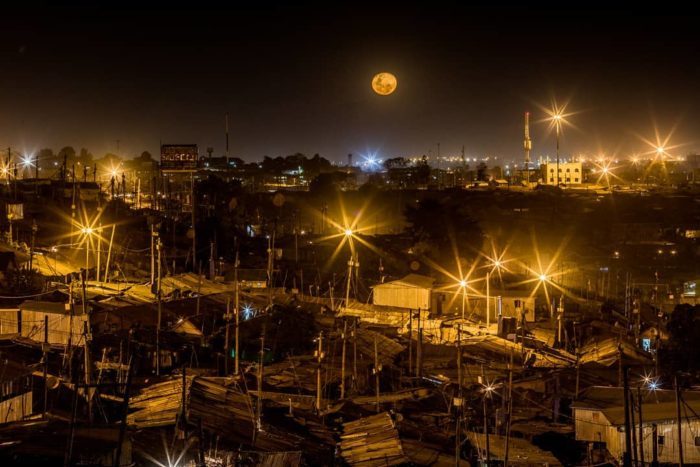
The moon rises above the sky in Kibera.
Photo by © Bryan Jaybee @storitellah #KiberaStories
While a lot of efforts have been put in place to light up Kibera, the question that is on every Kibera resident is whether the effort in place is enough to curb the issues of insecurity during the night. Most of the Kibera residents are casual labourers, most working in the industrial area of the city. The rest are either running their small business within the area and others run small groceries that have their pick time in the evening when everyone comes back and needs to grab something for the evening before calling it a day. All these sectors can only thrive if the security of the area is well improved and this can be achieved when various factors are considered such as increase of security patrol by the police, adequate installation of security lights, lighting up dark allies and lastly community policing.
Here I will concentrate more on the second factor that focuses on the adequate installation of security lights in the area. As I started by saying, a lot of initiatives have been carried out in the area to light up the area. This ranges from the adopt a light project that was initiated by the current women representative of Nairobi Hon Esther Passaris. This was the first of its kind in Kibera and it saw installation of several floodlights in Kibera, which lit the areas very well and the residents were so confident that this would address the issue of insecurity, on the other hand, it also provided light to some of the street vendors who couldn’t afford to stay longer through the night because they couldn’t afford electricity or didn’t have enough money to fuel their lanterns. In 2014 Senegalese singer AKON through his project “Akon Lighting Africa” committed to assisting in lighting up Kibera by funding the installation of more security lights throughout Kibera.
What went wrong?
If you visit Kibera, one of the unique features that you will notice cropping out of the rusty rooftops is the high mast of security lights, but once you get closer then you start noticing something is off with them. You will notice some of the lights are faulty “blinking constantly”, others are still on even during the day, while others are either missing the light bulbs or have none. In other cases some have been vandalized and twisted to face the wrong direction, then we have those whose main switch was also vandalized hence the lights are not working.
While these initiatives were well received by the community, we couldn’t help but notice there are a lot of challenges that have been encountered in the process and that led us to conduct a mapping exercise to understand the scope of the effects.
Security lights mapping
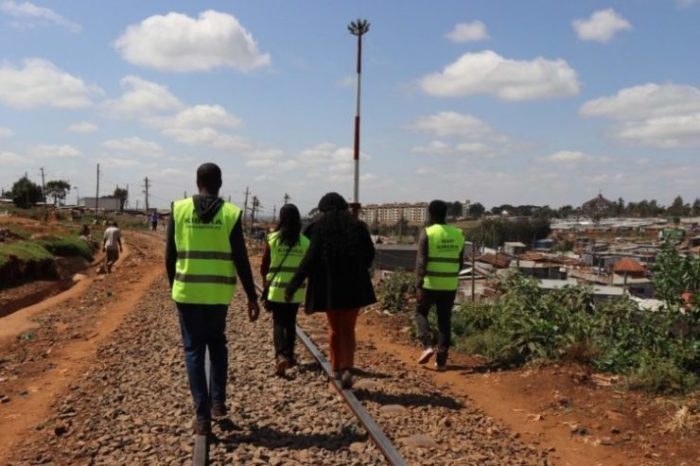
Map Kibera team in the field collecting data.
Mid this year as part of a security mapping project, we planned to revisit some of these sites to update the data that we had collected before. First we checked what we had already and looked for any data gaps that we could collect to create a more substantial case on the issue of insecurity and how it’s linked to how well the areas are lit. After several consultations with various stakeholder we settled on adding the following information:
- Location of the light
- Type of security light
- Who funded the project
- Who does the maintenance of the light
- Who is in charge of operating the light (where it requires one to switch it on)
- What is the source of power
- Number of lights on the pole
- Out of those how many are working
- The colour of the light
- What time does the light switch on
After putting up everything together we rolled out the mapping exercise starting with Fort Jesus estate. The exercise is still ongoing as we had to take breaks in between to work on other things, then followed by the August elections where we put all our efforts into covering the elections. So far we have been able to visit all 13 villages of Kibera and have mapped 431 lights. It has been an interesting exercise where we got to interact with the residents of the area who have openly expressed their concerns and grievances regarding the state of security lights in Kibera such as:
Vandalism
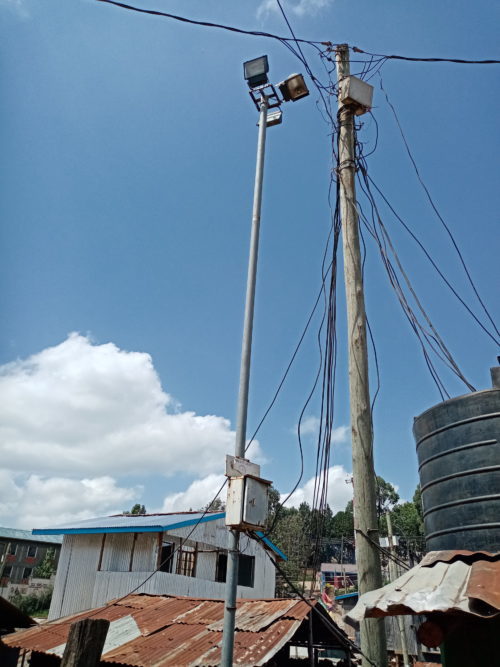
Vandalized streetlight-one of the light bulbs has been stolen.
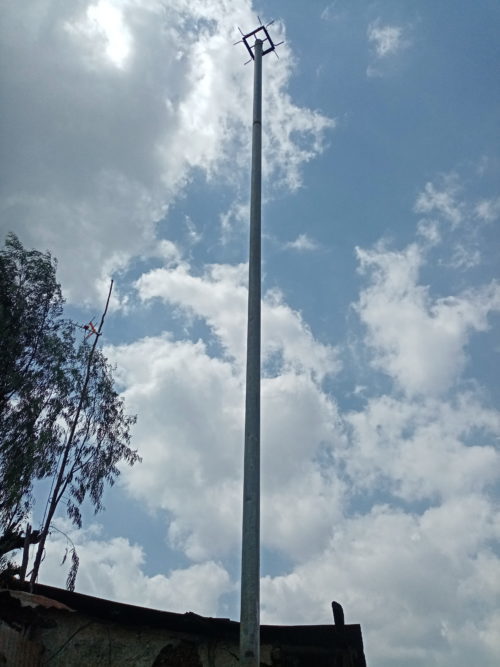
Another vandalized streetlight-all the light bulbs have been stolen.
The government is putting a lot of effort into ensuring there are adequate security lights in Kibera. The exercise has also experienced huge setbacks through vandalism. It’s so clear that there are those in the community whose businesses thrive in darkness and have made every effort to ensure that these security lights don’t interfere with their work. Thugs have intentionally vandalized the lights either by hitting the lights and breaking them or even going to the extent of stealing the lights, how they reach up the light pole is a story for another day. We also notice that not all vandalism is conducted by the so-called thugs, in places where the floodlights were installed some of the residents found a way of tapping the electricity from the main switch and this has caused the lights to break down.
Lack of regular maintenance
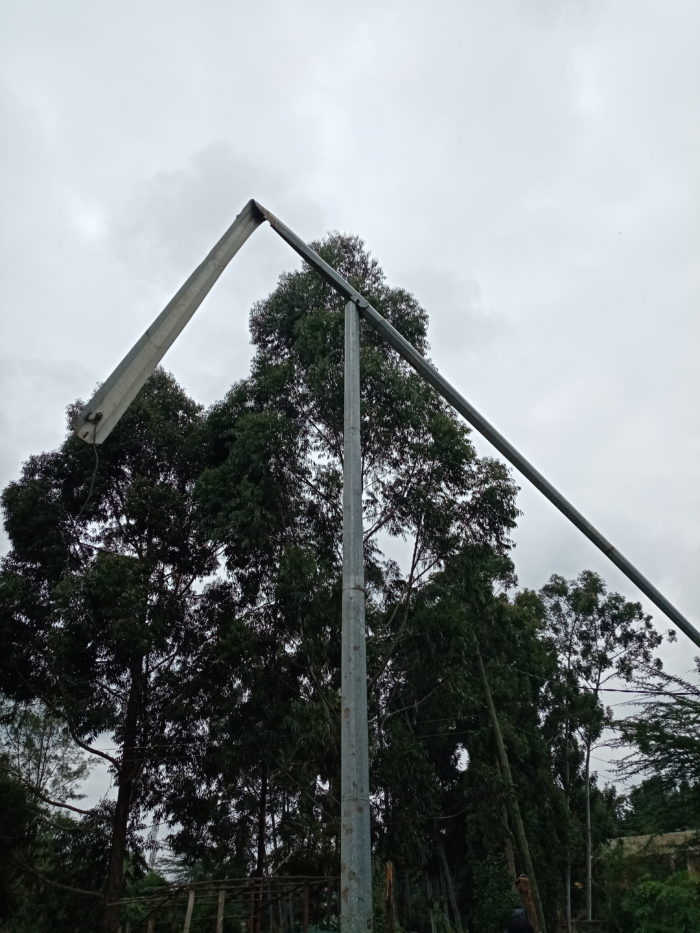
The light has been neglected for months now after it crumbled in the process of installation. According to the local this was a result of using substandard material for the light.
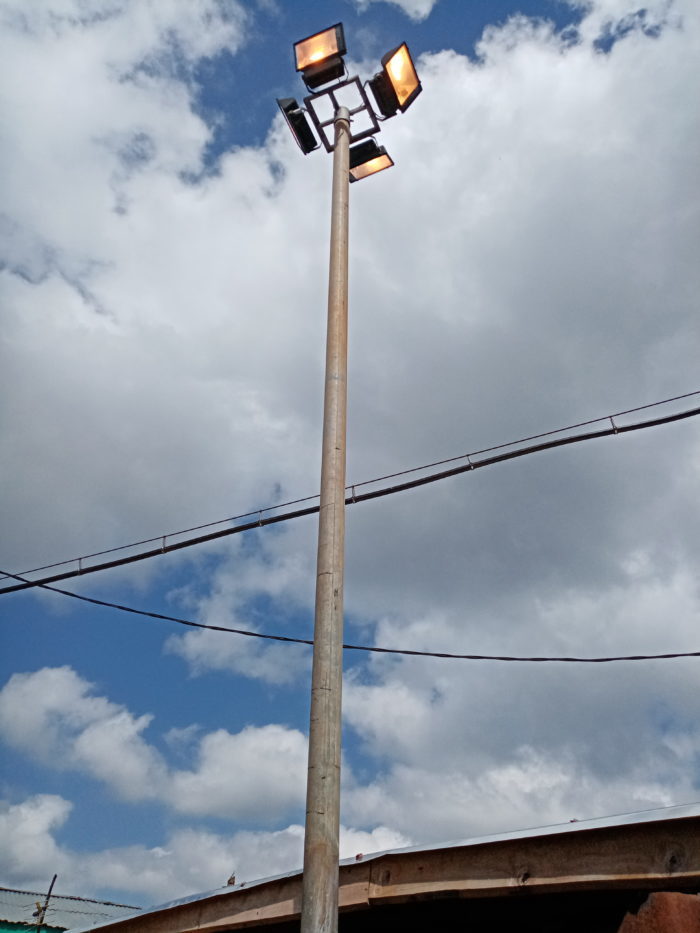
A light stays on during the day, this is due to a malfunction in the sensor.
In some places like Ayany that saw a new installation of security lights by Nairobi Metropolitan Services (NMS) just a few months ago, some of them have already broken down. There are many factors that result in this, but the most common one is due to power surge. Because of how the switch boxes were being vandalized, the authorities opted to connect the lights directly to the main electricity lines. However, the electricity is not well stable, therefore most of the street lights break down due to power surges. Unfortunately, when this occurs it takes a lot of months for the lights to be repaired, in other places, it has taken years for the lights to be repaired, and even when that is done they break down again after a few weeks. Hence the areas are left in darkness despite having the security lights in place.
Uneven distribution of the lights
While some places have security lights almost 5 metres apart, there are other villages like Soweto West and Kianda that only have one or two lights. How this is decided is still unclear but it also shows how some places are still marginalized. I believe it’s right for people to be treated equally and enjoy the same services as everyone else. We are hoping that this data will highlight this high level of inequality and in places where there are few security lights, more will be installed; because the issue of insecurity isn’t determined by an individual’s status quo, it affects everyone and everyone needs to feel safe where they are.
As we await the above issues to be addressed by the relevant offices and offer a lasting solution, we would also like to recognize organizations such Kibera Human Needs who saw the need and launched a project to install solar-powered streetlamps in two villages of Kibera, which has improved lighting of the area at night.
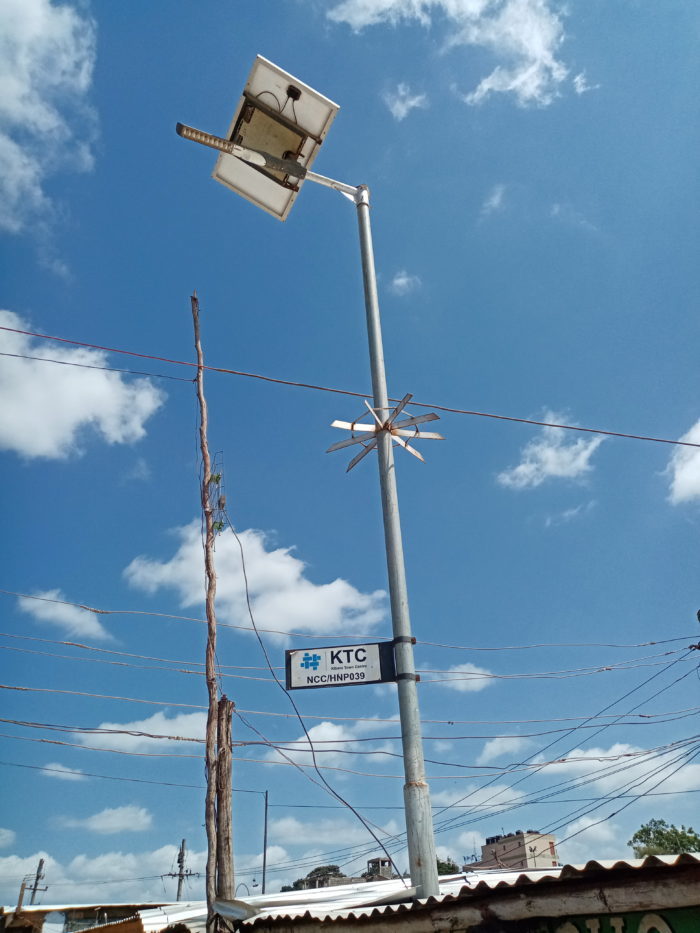
One of the solar-powered streetlamps installed by Kibera Human Needs
In conclusion, fixing the street lighting situation in Kibera will require a lot of partnerships and commitment between residents, local government, and other stakeholders. The best recommendation we have heard from the residents is that many youth groups are open to working with Kenya Power and Lighting (KPLC) and the local authorities to help track and report any arising issue regarding the streetlights. This will help in planning regular maintenance of the streetlights and will also work towards the prevention of vandalism of the electrical cables and light bulbs. The residents need to be involved in all street light projects in order to create a sense of ownership-this will instill a huge sense of responsibility and will prove helpful in the long run.
by: Zack Muindre September 27th, 2022 comments:
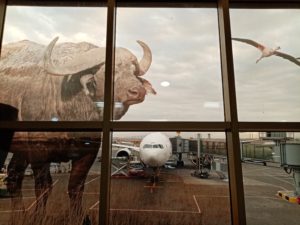 The journey to Florence, Italy to attend both SOTM and FOSS4G, has had nothing but memorable moments. It all started on a good note, with my visa being processed on a record of two days, considering that my appointment was a day before our general election (The Kenyan election was on the 9th of August), and I was afraid that it may delay the process by at least a few days.
The journey to Florence, Italy to attend both SOTM and FOSS4G, has had nothing but memorable moments. It all started on a good note, with my visa being processed on a record of two days, considering that my appointment was a day before our general election (The Kenyan election was on the 9th of August), and I was afraid that it may delay the process by at least a few days.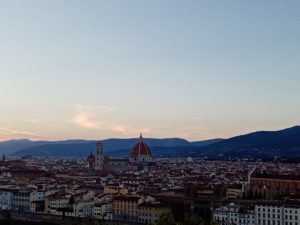
My flight to Florence was a smooth one with 2 stops one in Addis and a long one in Frankfurt, arrived in Florence in the afternoon of 18th August. I want to thank Cristiano and Geoffrey who gave us a heads-up on how to get to the hostel from the airport. On arriving at the hostel, the guys at the reception were so friendly and efficient. I was able to check in so fast and in that process met with Amor from OMDTZ after a quick catch we headed for dinner at Indian restaurant (that later became well known for its nice kebab (shawarma).) The next day I got to interact with most of the unsummit scholars on our way to the SOTM venue. It was interesting to hear how that everyone had their own experience with their flights from long delays, to rerouting, to delayed luggage and so on.
State Of The Map 2022
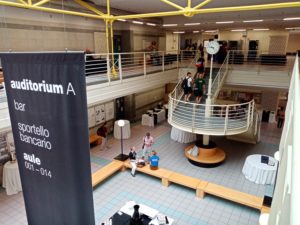
Even with all those travel setbacks and heavy rain the previous night, the SOTM event kicked off on a high note with Fairhurst’s keynote speech [“State of Independence”](https://2022.stateofthemap.org/sessions/URUJH8/). As always SOTM provides an amazing experience, and it was nice reconnecting with old friends and also getting to meet new ones and learning about the amazing work they are doing in their communities.
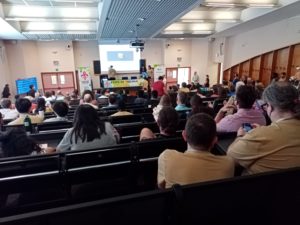
Throughout the 3 days, there was an amazing lineup of talks, workshops, and academic tracks both in person and virtual. I got to bookmark several sessions that I found interesting from which I had the opportunity to learn about the amazing mapping tools and new developments, such as MapRoullete and iD editor. If it was possible I would have written about all the sessions, but for now, I will just focus on two HOT unsummit humanitarian sessions and the session on Entry-Level Mobile Mapping.
HOT unSummit humanitarian sessions
The presentations at the summit sessions were quite inspiring and it was really interesting to see how the concept of community mapping has grown over the years. Who would have made them even more interesting other than the session moderator Pete Masters. Moreover, it was nice seeing in most of the presentations that local communities’ voices and their feedback were valued. From the presentation, I also noticed several projects that focused on solid waste management and WASH. Which made me think, maybe it’s time for these communities to come together and share lessons from their projects and their methodology. In doing so other communities can easily pick up what has worked and find also find common solutions to the challenges they encountered. One way to do this would be to host a workshop and bring together all these communities and other interested communities to discuss the above points and document best practices for mapping solid waste and WASH.
Entry-level Mobile Mapping by Kristen Tonga
In this session, it was interesting to see how challenges around mobile data collection are similar across different countries. While these apps are created with good intentions to simplify the data collection process, most of them also ignore some basic things such as internet connectivity and storage. While this may not be a problem in other places, it’s a common challenge in most developing countries. It was so disheartening to hear someone had to delete his memorable photos in order to create enough storage and the app still didn’t work. The reason, why I was excited to attend this session, was because these are the same challenges we continuously deal with and we have to mitigate them by providing phones to the data collectors. In a nutshell, there is still more that needs to be done around mobile data collections and I hope these sessions kicked off meaningful conversations amongst different communities and mobile developers.
FOSS4G
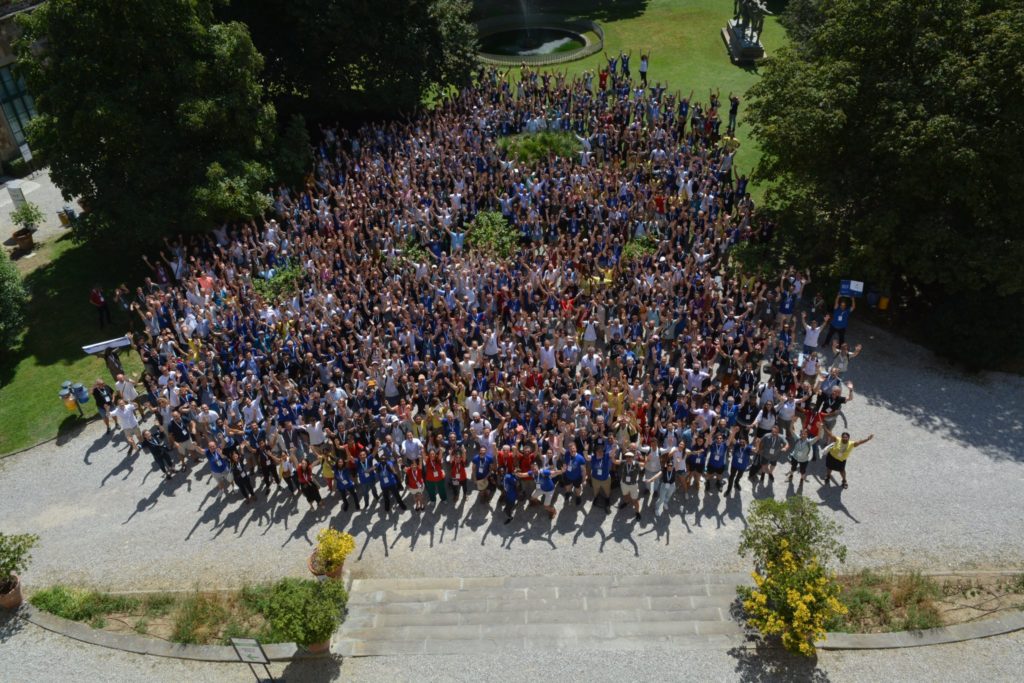
This was my second time attending FOSS4G, after the one that was in Dar, Tanzania 2018. In the Dar event, I, unfortunately, missed out on the first two days. And if you ever attend an event after the first day, there is always that feeling that you’ve missed out on a few things. At least this wasn’t going to be the same this time around as I was going to take part in the conference from the first day to the last day. I was also looking forward to it because I had two sessions that I was presenting, one on the first day and another on the last day.
Major highlight of the two events
1. Volunteering
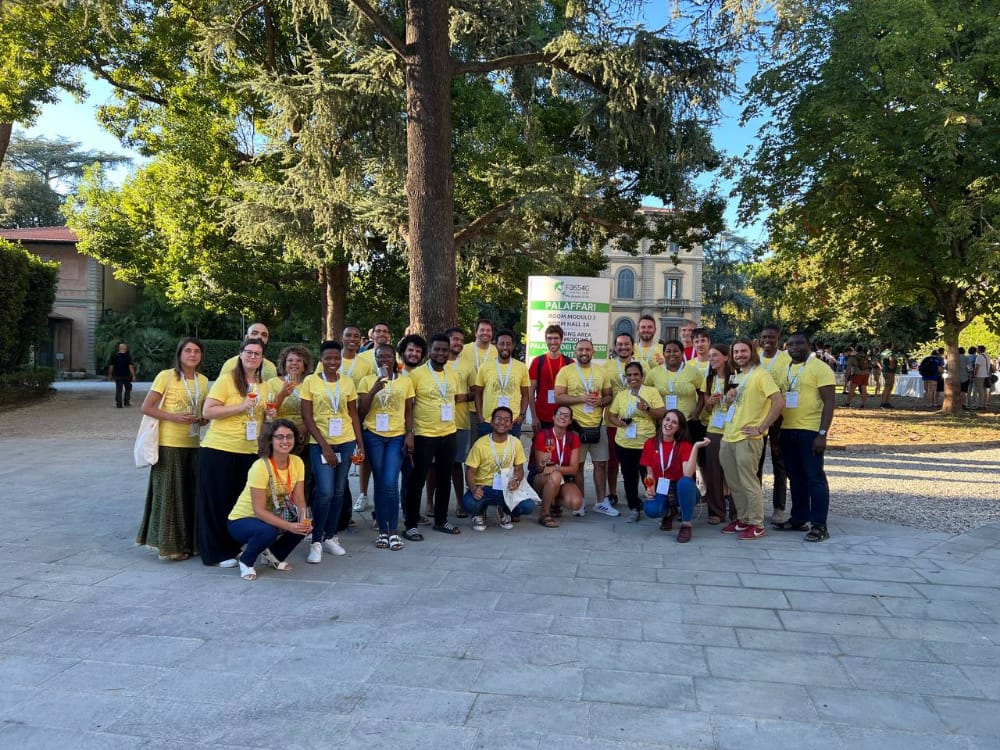
Well, this was my first time volunteering at any event. I wasn’t sure how to go about it as it felt like a huge task ahead. On the first day, we got a quick orientation and got a bit acquainted with the venue and the different roles we were to help with. After the keynote speech, I had the chance to be a session assistant, which went really well. I was also able to help with other roles throughout the three days and also had a chance to volunteer during one of the two-day workshops in FOSS4G. I want to send a big shout-out to Lorenzo and Anisa for their leadership, they coordinated everything so well and made the whole process smooth for both the SOTM event and the FOSS4G conference.
2. Social events
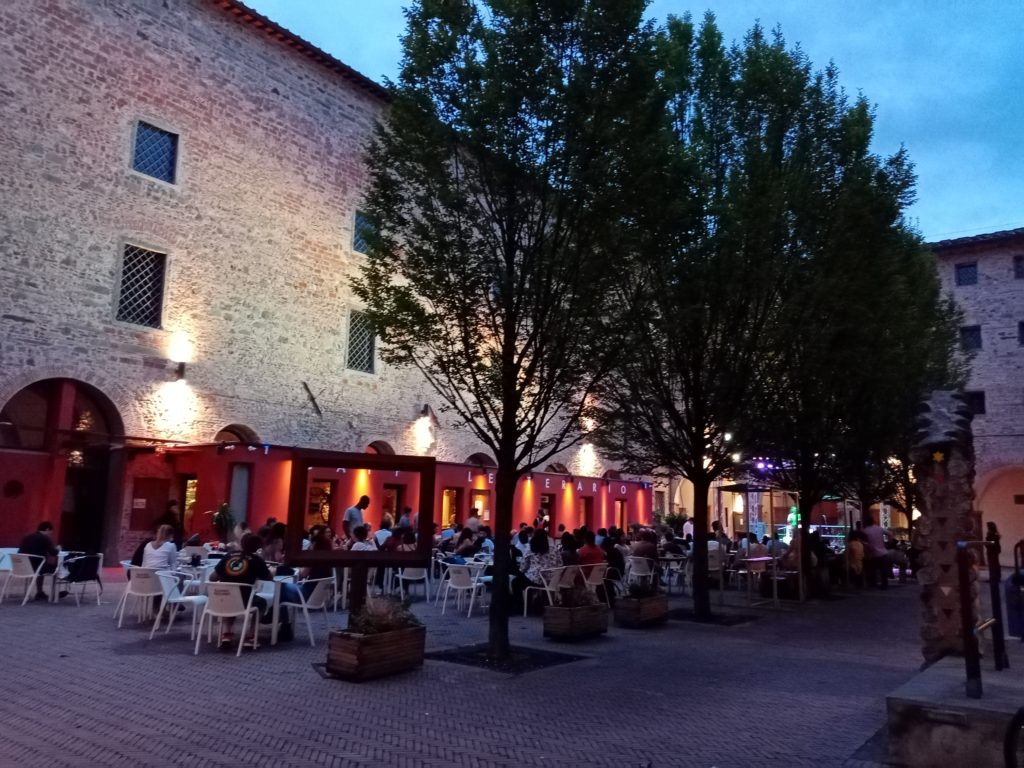
On the evening of the 19th, we had a social event to celebrate World Humanitarian Day hosted by HOT. It was great to hear from various speakers on the impact of OSM in the humanitarian space. It was a wonderful time with great music, drinks, food, and jovial moments of catching up with old friends and connecting with new ones.
On the evening of the 20th, we were able to pick up from where we stopped the previous night. This time around, the local organizing committee took us to the local central market. With just a loaded voucher you could grab a nice meal and drinks and if you are full, you could get yourself a souvenir to take back home.
3. Culture
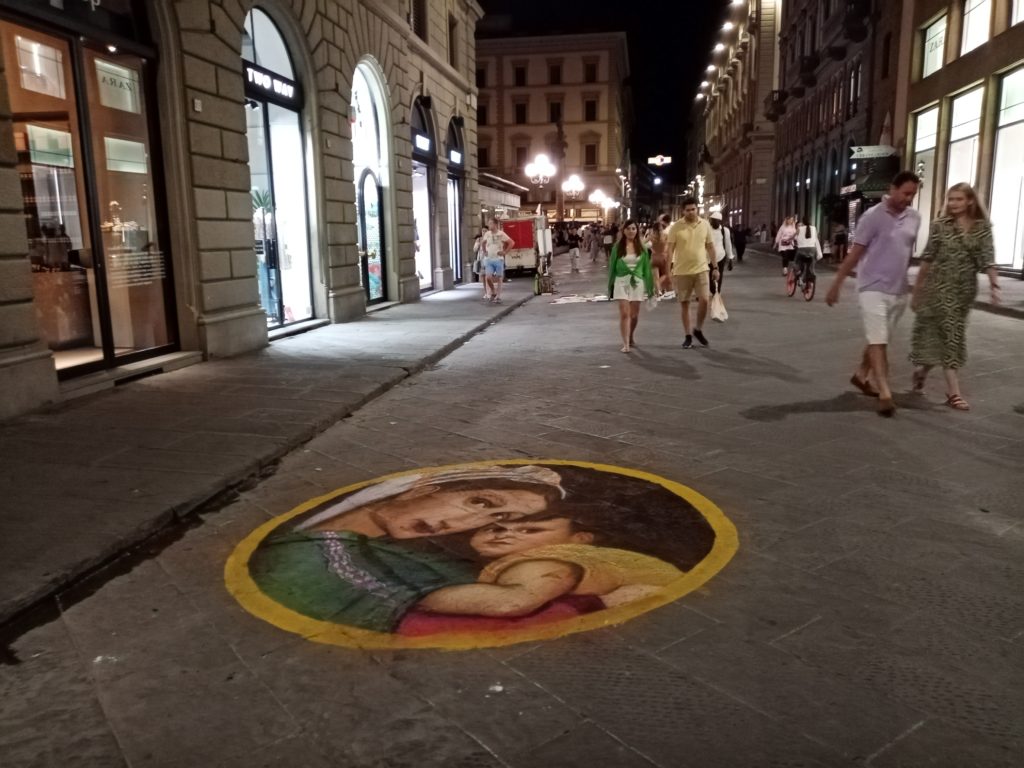

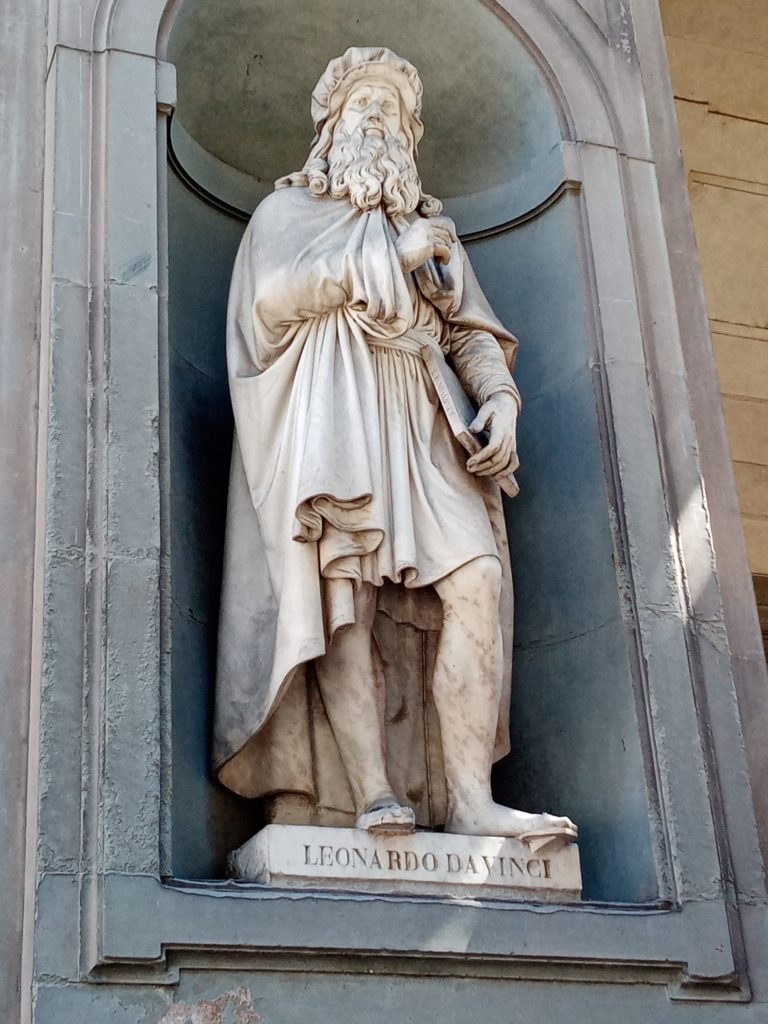
Firenze was an amazing choice of location for both SOTM and FOSS4G. As one person jokingly said, the whole city is a piece of art. I had a chance to visit some of the sites, taste some good food and of course, drink some fine Italian wine. In short, Firenze was good for me and I enjoyed my stay there.
HOT Unsummit 2022
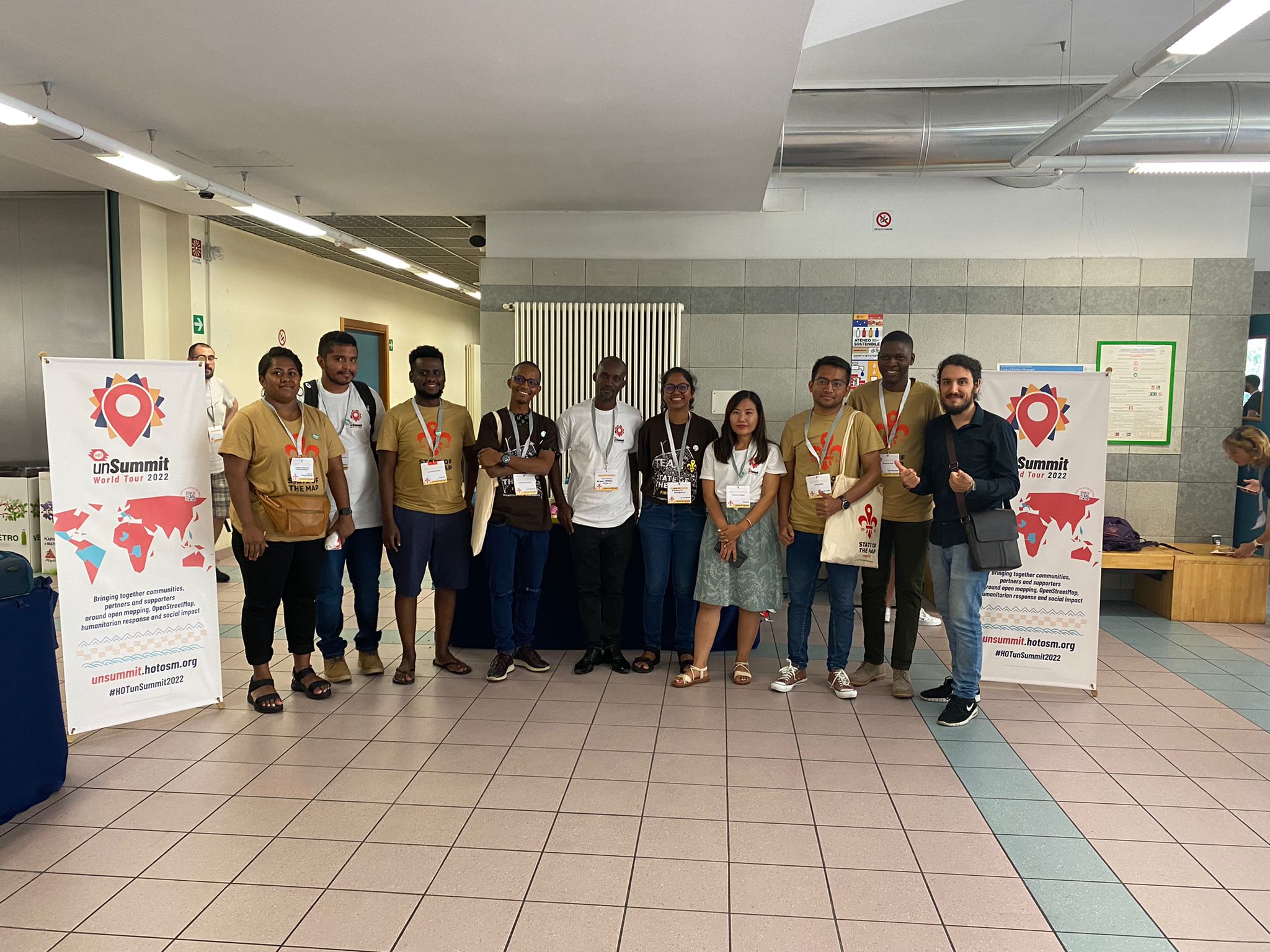
All that I have shared above wouldn’t have been possible if it wasn’t for the HOT unsummit travel grant that made it possible for me and the other 14 scholars representing different communities around the World to attend both SOTM and FOSS4G. All that we needed for our travel was taken care of and we had an amazing team that coordinated the whole process and made it successful. I want to thank HOT through the Unsummit 2022 travel grant program for making this possible for us. Ciao!!
by: Zack Muindre November 9th, 2018 comments:
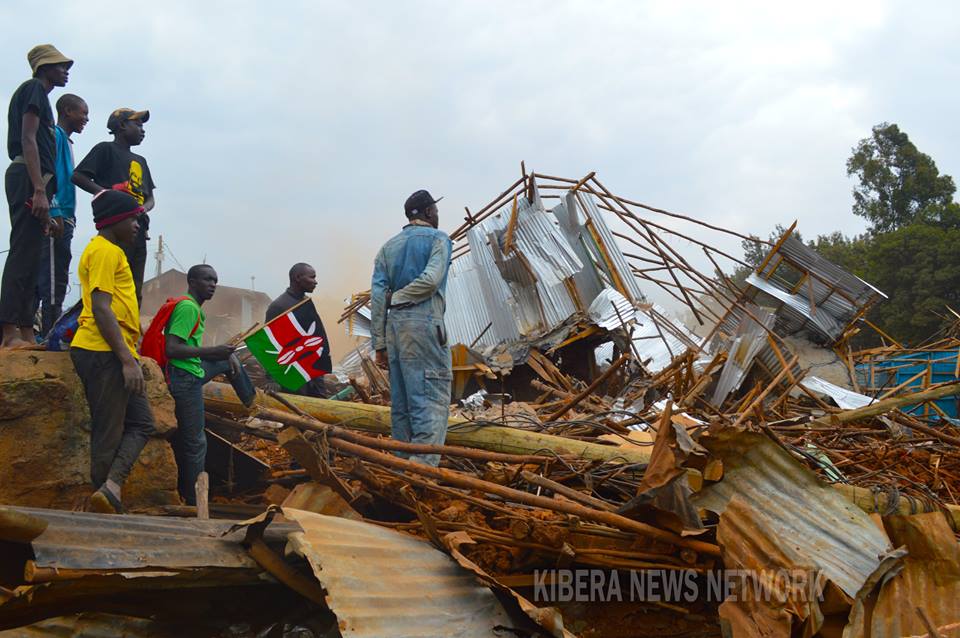
2018 is a year that most of Kibera residents would really like to forget. In the last 6 months, the residents of Kibera have been waking up to the sounds of bulldozers in their neighbourhood- not for purposes of evading traffic along Lang’ata road or Ngong Road. This time they had come with one purpose, to bring down structures which most of them had called home. To some, it was their business which ensured that they had something on the table at the end of the day. And to others these structures served as schools where their children went to learn and get the necessary knowledge that would prepare them for the market place and change their lives forever.
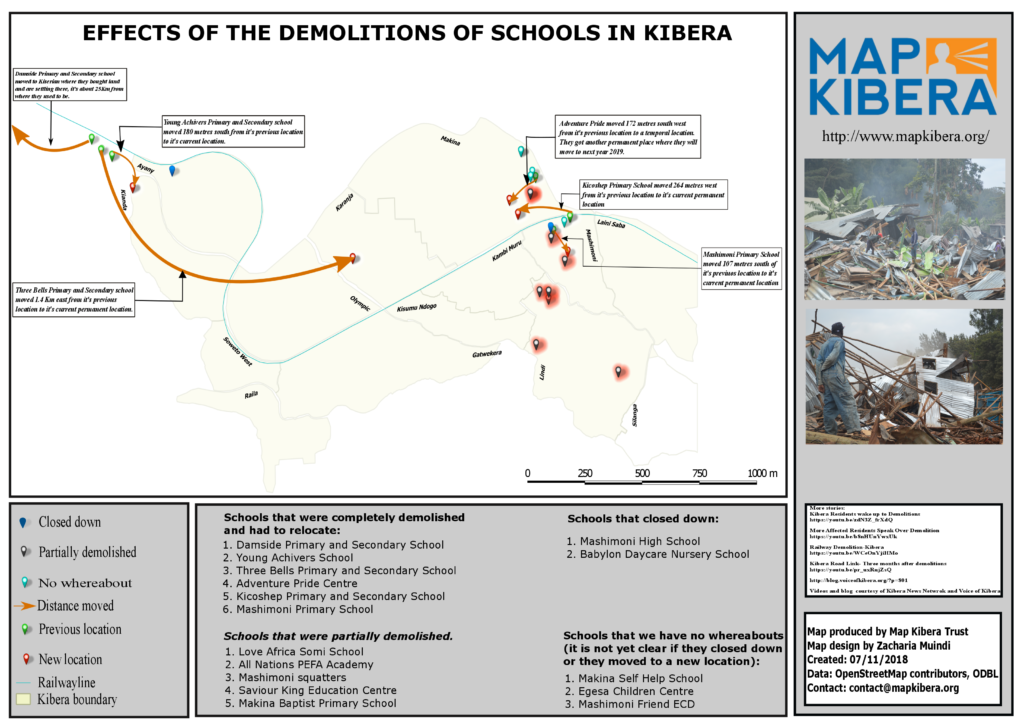
A map designed by Zack Wambua showing the effects of the demolitions of schools in Kibera (click image to expand).
The demolitions in Kibera affected 4 schools that were located near the railway line around 42 area and 10 more schools were affected when structures were demolished to pave way for the construction of Kibera Link road (the road meant to link Ngong road and Lang’ata road to ease traffic on Ngong road).
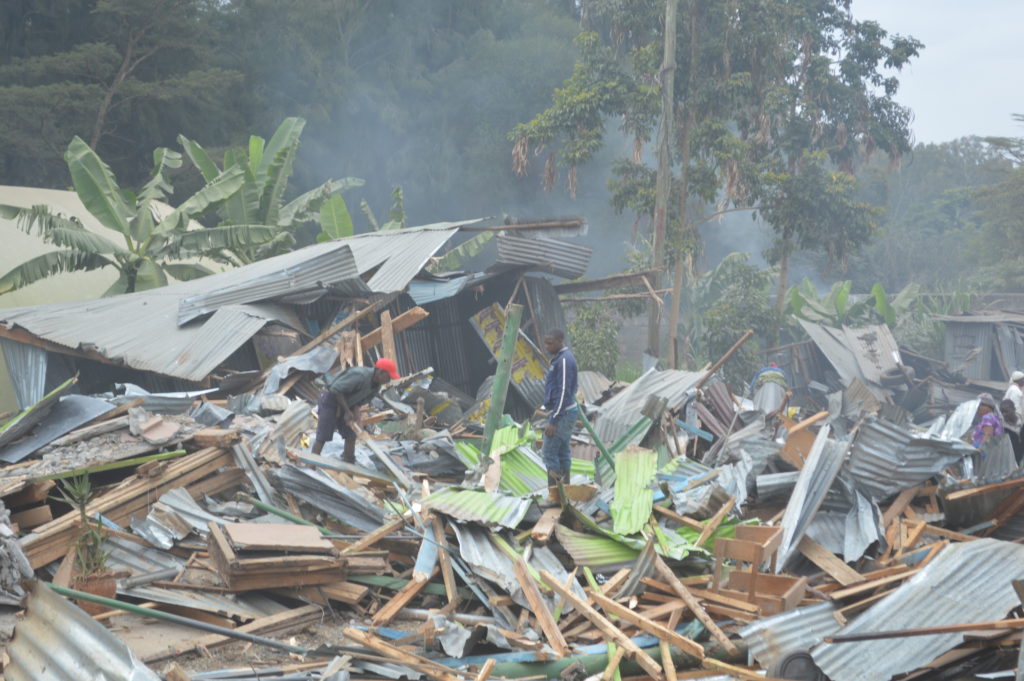
Demolition of structures that are along the railway line at 42
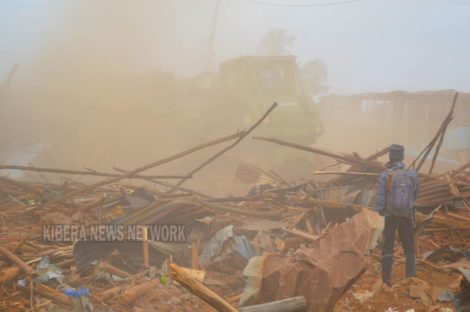
A bulldozer brings down structures around the DC’s place.
After all these incidents Map Kibera team went back to the field to track the schools that were affected and update their current location on the Open Schools Kenya website. On our way, we stopped at Babylon Day Care to talk to the school head (who also happens to own the school) to find out if she knows where some of the demolished schools might have moved to. In between our conversation, we learnt that one of her other schools had also been demolished. Her face was filled with grief and sadness as she explained to us how she was forced to take some of her students to the nearest schools because she had nowhere to take them. We asked if she intends to reopen her school again and she told us she doesn’t see the need to and if she gets that chance again she will only do that in her rural place. After our short talk she shared with us the contacts of another school called Damside Preparatory that was affected and told us that the principal of that school would be in a position to tell us where the other schools relocated to.
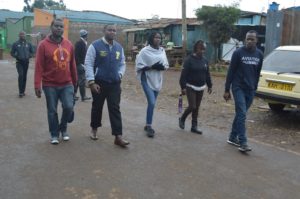
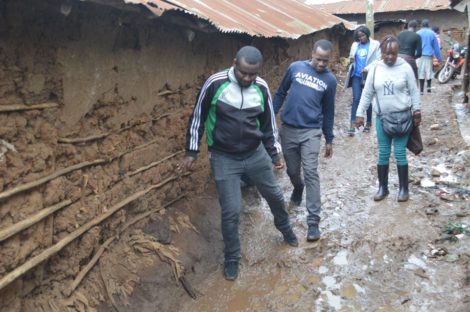
In some area we had find a way through the muddy footpaths to find the schools
I quickly saved the number on my phone and proceeded to where we had been directed. When we got there, we were met with a vast empty land and the remains of what used to be people’s homes and schools. I called the school head and after a brief introduction he told me to go to where the school used to be as he was already there. We went through the rubble and after few miles we saw a group of people standing together. When we got to where they were we quickly introduced ourselves. The school head introduced the team that he was with, which comprised of class 8 candidates and two parents. The school head reminded us that the place where we were standing on is where their school used to stand and they were meeting there to finalize on their preparations for the forthcoming national exams. We were curious to find out where the students will sit for their exams now that the school had been demolished.
“The government offered space for the students in one of the nearby public school and so that is where they will do their exams,” said the school head.
“So what is next for the school? Have you found a place to move to?” we asked.
“Yes we got a place, we bought land somewhere close to Kiserian and that is where we have moved to,” said the school head. He went on to say, “So far we have been able to construct 2 classrooms and a dormitory. The plan is to have the school operate as a boarding school.”
“But that’s too far from Kibera, what happens to your students who live in Kibera?”
“I agree that’s far and the move has proved to be a challenge to some of our students since majority of them were needy and so they cannot afford all the requirements to be in a boarding school. We would have loved to move closer but where in Kibera can we move to? We all know how hard it is to get land let alone to get a title deed.”
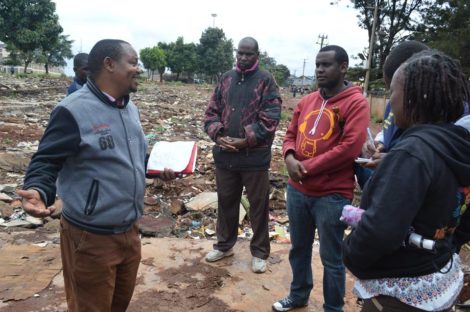
The School Head of Damside narrating their ordeal
The school head went ahead to recount how they had incurred a lot of losses as a result of the demolition. He had just acquired the code to make his school an exam centre, a process that had cost him 100,000 KSH. In addition, he had just finished building a laboratory earlier this year that also cost him a large sum of money.
Afterwards, the school head agreed to an impromptu interview with members of our media team, Kibera News Network, who had accompanied us (check out their video here!). He also asked us to interview one of the parents and a student so that they can share their side of the story.
The school head later told us where the other schools moved to. One moved to a nearby SDA church, another pitched tent in a nearby health dispensary and the other one moved somewhere along Karanja road.
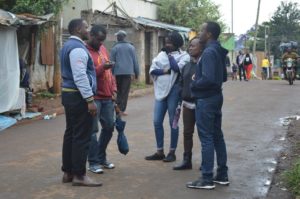
After saying goodbye, we left to find those schools and pick the coordinates of their new location. On our way we couldn’t help but think of what some schools have had to endure as a result of the demolitions. Some have been left counting

Sam picking coordinates of where one of the schools moved to.
losses, some have been forced to shut down. Others have had to partition some of the rooms to accommodate the number of students. Parents had to go through the hustle of looking for a new school and the most affected group is the students that have to walk a long distance to their new school and at the same time adapt to the new environment. I can’t imagine what could be going through the minds of class 8 and form 4 candidates. How are they supposed to compete with students from other schools considering what they have been through? While other students were in classes reading, students from the affected schools were busy trying to salvage what they could from the rubbles of what used to be their classroom. While other students are reading their books, students from these schools lost all their books during the demolition. The few books that they could salvage would have to be shared amongst themselves which means that they don’t get a chance to carry the books home with them to read.
We will continue to follow up with the schools, and update their information and locations on Open Schools Kenya.







 The journey to Florence, Italy to attend both SOTM and FOSS4G, has had nothing but memorable moments. It all started on a good note, with my visa being processed on a record of two days, considering that my appointment was a day before our general election (The Kenyan election was on the 9th of August), and I was afraid that it may delay the process by at least a few days.
The journey to Florence, Italy to attend both SOTM and FOSS4G, has had nothing but memorable moments. It all started on a good note, with my visa being processed on a record of two days, considering that my appointment was a day before our general election (The Kenyan election was on the 9th of August), and I was afraid that it may delay the process by at least a few days.


















